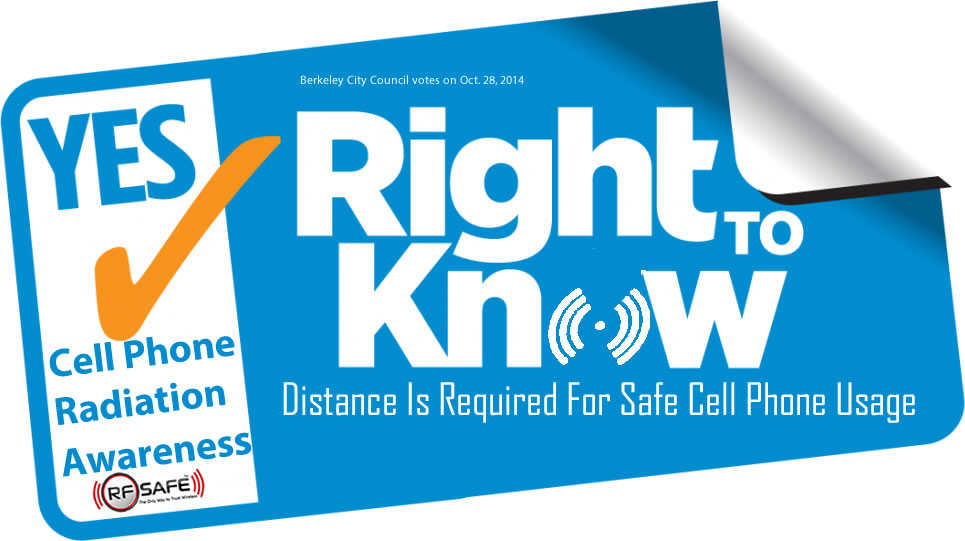The ANA and wireless carriers argued that the 2016 Berkeley law violates free speech principles. The measure requires stores to include the following language in their warnings: “If you carry or use your phone in a pants or shirt pocket or tucked into a bra when the phone is ON and connected to a wireless network, you may exceed the federal guidelines for exposure to RF radiation.”
The Federal Communications Commission independently requires cell phone manufacturers to issue a similar warning, according to the appellate court.
CTIA sued in 2016 to block Berkeley’s law. A trial judge refused to do so, as did a three-judge panel of the 9th Circuit. In May, the wireless carriers asked for a new hearing in front of at least 11 of the circuit’s judges; that request was backed by the ANA, which argued that the government “may not require private parties to vilify their own products, and certainly cannot require misleading statements about them.”
The 9th Circuit on Wednesday refused to grant a new hearing in the case. Circuit Judge Kim McLane Wardlaw dissented from that decision, writing that a “proliferation of warnings and disclosures compelled by local municipal authorities” could divert consumers’ attention from more important warnings.
Rejecting arguments made by the Association of National Advertisers and CTIA-The Wireless Association, the 9th Circuit Court of Appeals has refused to reconsider its recent decision to uphold a Berkeley ordinance that requires cell phone retailers to warn customers about possible radiation exposure.
Dan Jaffe, ANA executive vice president of government relations, warns that the decision could “explode the potential” for inconsistent regulations in other states and towns.
“It’s highly likely we’ll start seeing similar things all across the country. There are 30,000 plus cities and counties around the country. Are all of them going to have these kinds of disclosures?” he asks.
Writing for the majority in an opinion published Wednesday, Circuit Judges William Fletcher and Morgan Christen said upholding the panel’s prior decision aligns the Ninth Circuit with four sister circuits that have held governments may compel “purely factual” commercial speech, even in the absence of consumer deception, to serve a compelling government interest.
“Our colleague would have us create a circuit split with the D.C., First, Second and Sixth Circuits,” Fletcher and Christen wrote. “We decline to do so on two grounds. First, circuit splits are generally to be avoided. Second, and more important, we believe that our four sister circuits got it right.”
But Circuit Judge Kim McLane Wardlaw disagreed, arguing that because the Federal Communications Commission already requires radiation disclosures in new cell phone user manuals, Berkeley’s “misleading” disclosure is “completely unnecessary.”
The dissenting judge argued the panel’s majority opinion “applies minimal constitutional scrutiny to Berkeley’s potentially misleading radiation disclosure, merely because it is not technically false.”
However, in upholding Berkeley’s cellphone warning law, the panel relied on a different standard established in the 1985 Supreme Court ruling, Zauderer v. Office of Disciplinary Counsel of the Supreme Court of Ohio. That ruling “permits compelled commercial speech when it conveys purely factual and uncontroversial information,” the panel found.
The Cellular Telephone Industry Association (CTIA), a wireless industry trade group, first challenged Berkeley’s ordinance in U.S. District Court in June 2015. The group claimed the law violated the First Amendment by forcing retailers to spread a misleading, government-crafted message.
U.S. District Judge Edward Chen put the Berkeley law on hold in September 2015, finding one line about a greater risk of exposure to cell phone radiation for children was baseless and unscientific.
After Berkeley removed that line, Chen lifted the ban in January 2016. The association appealed, and a three-judge panel upheld Chen’s ruling in a 2-1 decision in April.
The required disclosure states in part: “If you carry or use your phone in a pants or shirt pocket or tucked into a bra when the phone is ON and connected to a wireless network, you may exceed the federal guidelines for exposure to RF [radio frequency] radiation.”
Neither the Cellular Telephone Industry Association nor its attorney Theodore Olson, of the Washington firm Gibson, Dunn & Crutcher, responded to requests for comment sent Wednesday afternoon.
In an emailed statement, Berkeley City Attorney Farimah Brown said, “The city carefully crafted the ordinance to further a substantial government interest – the Ninth Circuit affirmed this in April and today’s decision to not revisit the issue is correct. We are very pleased with the result.”








